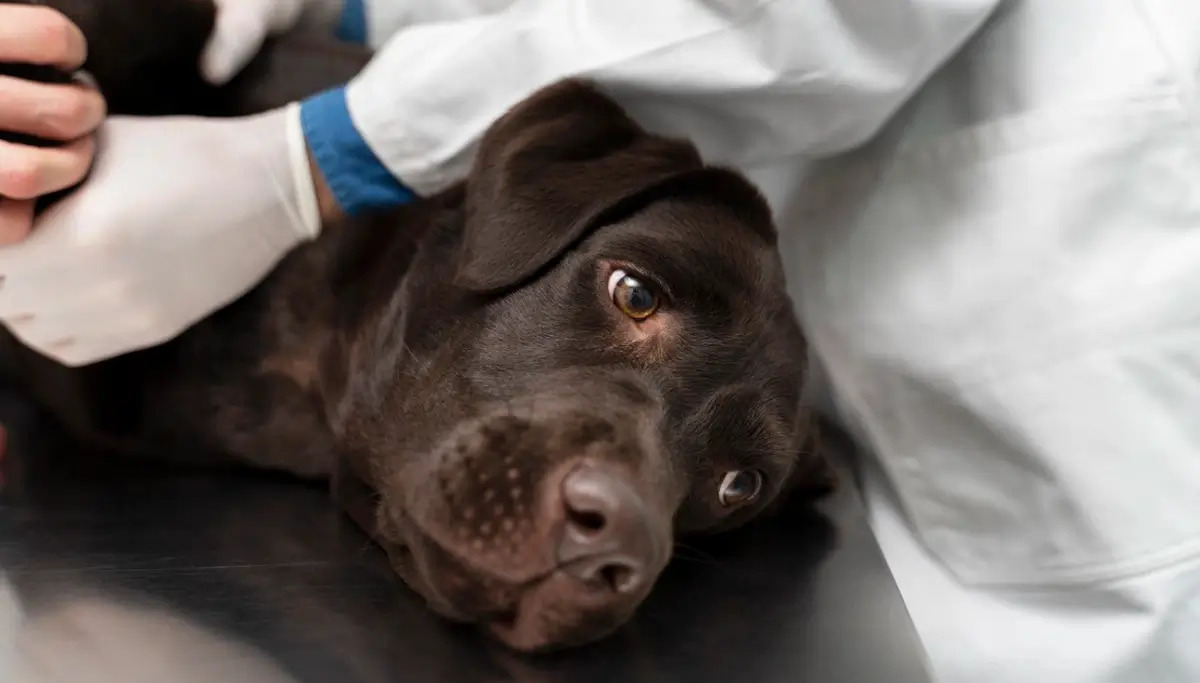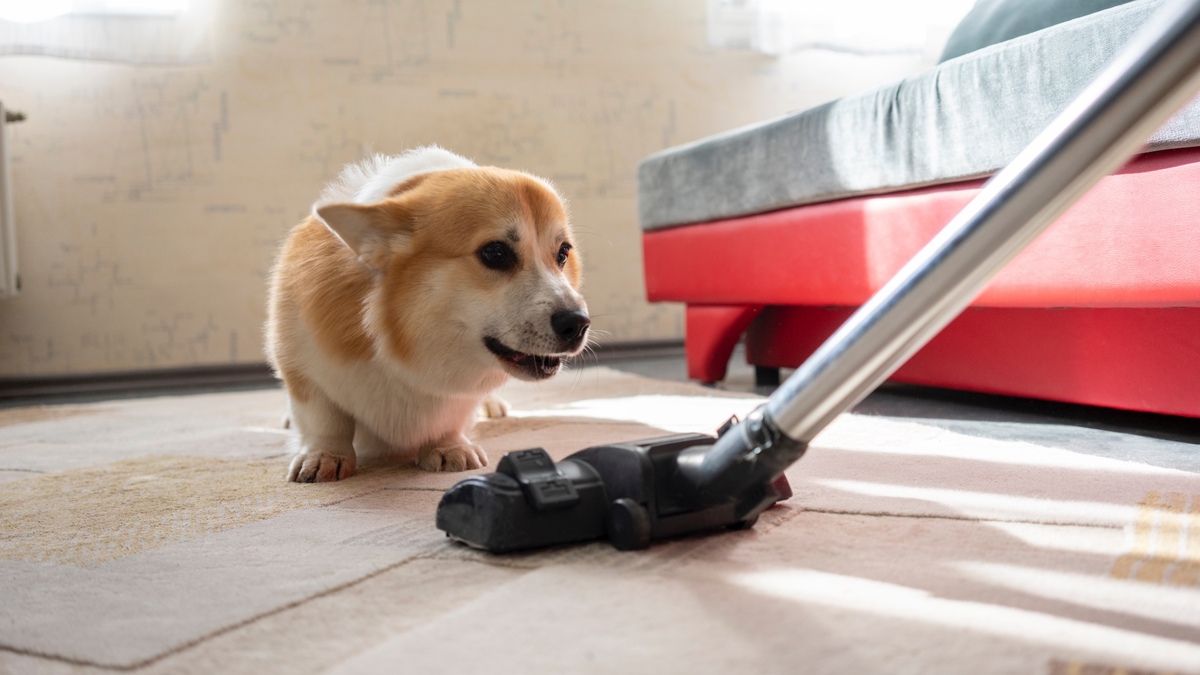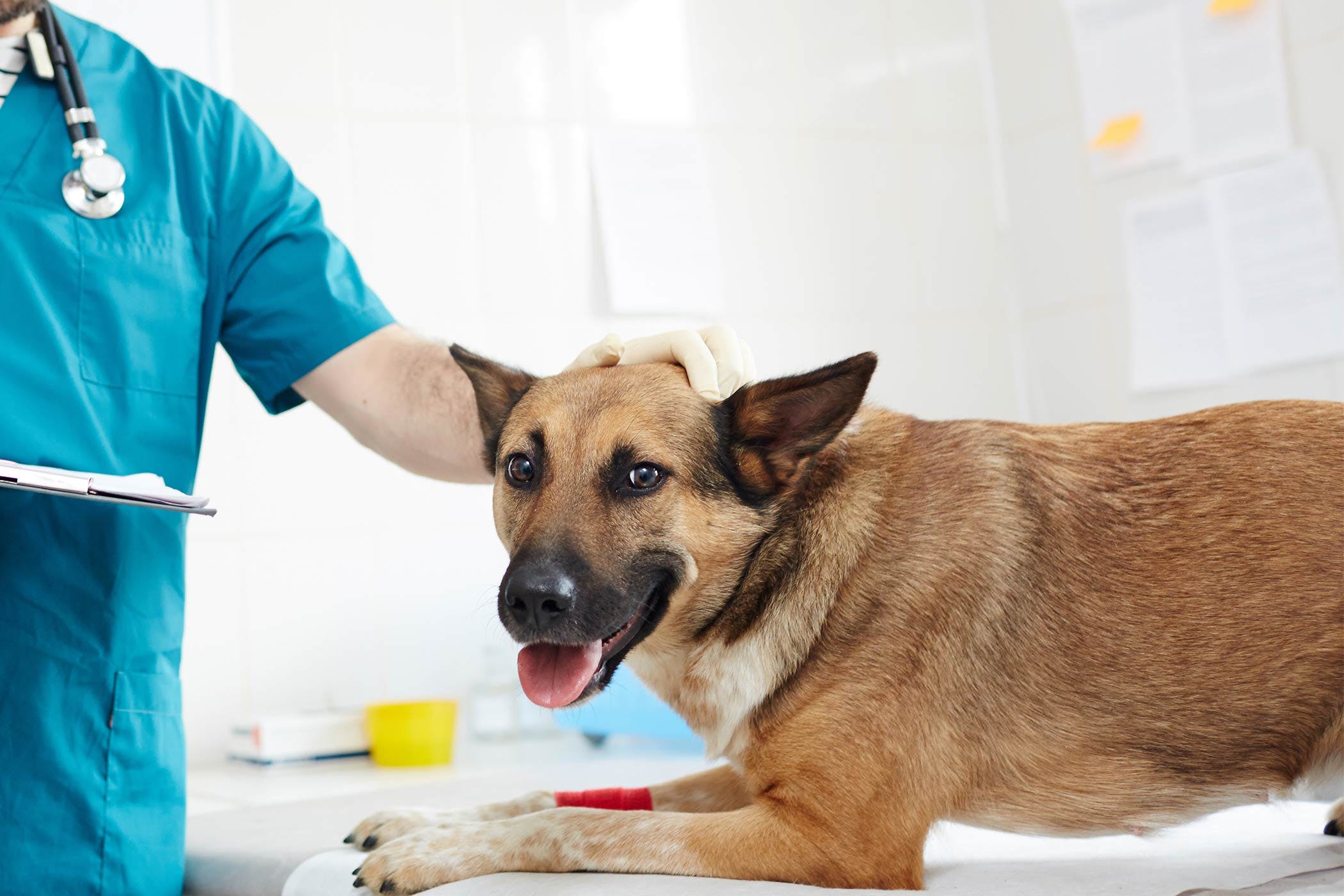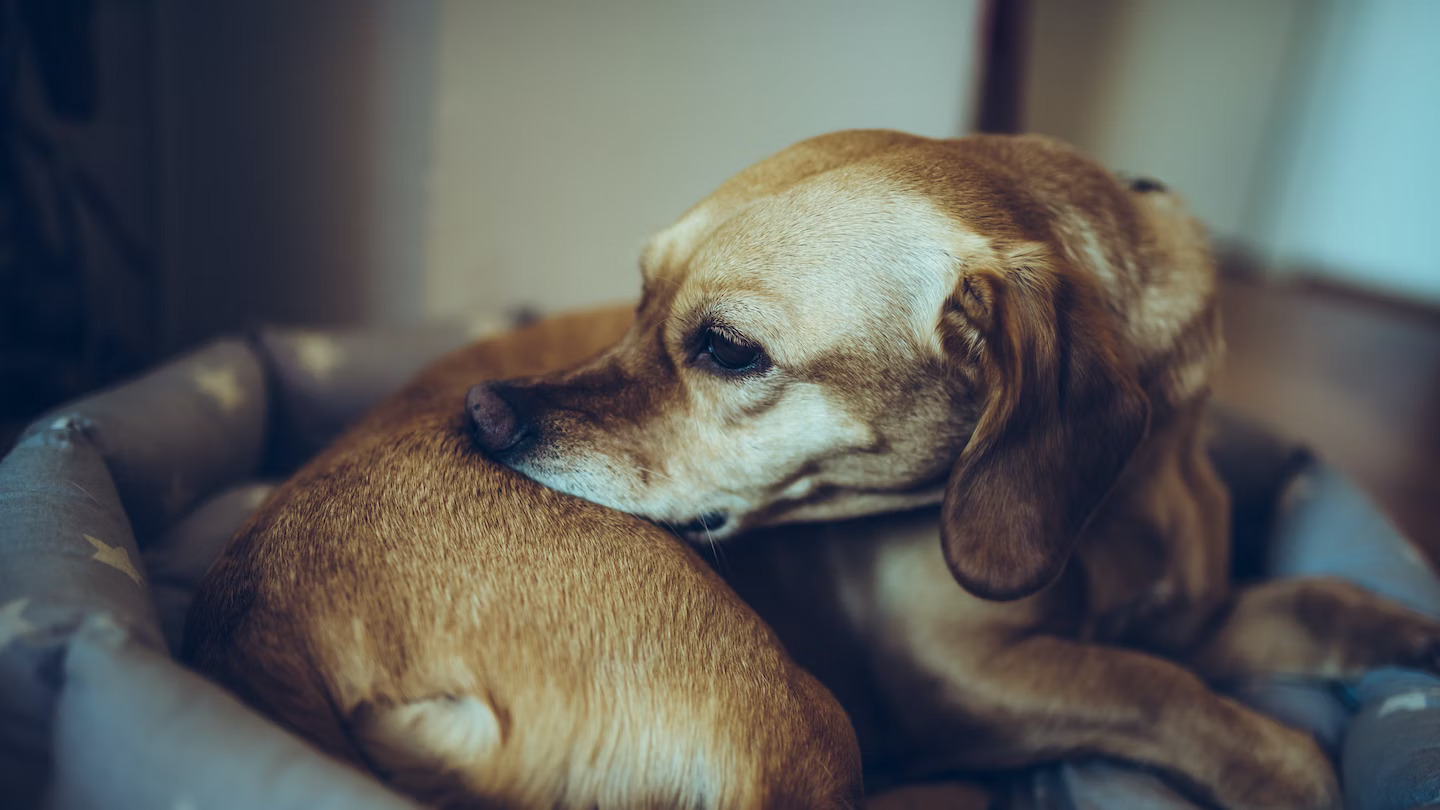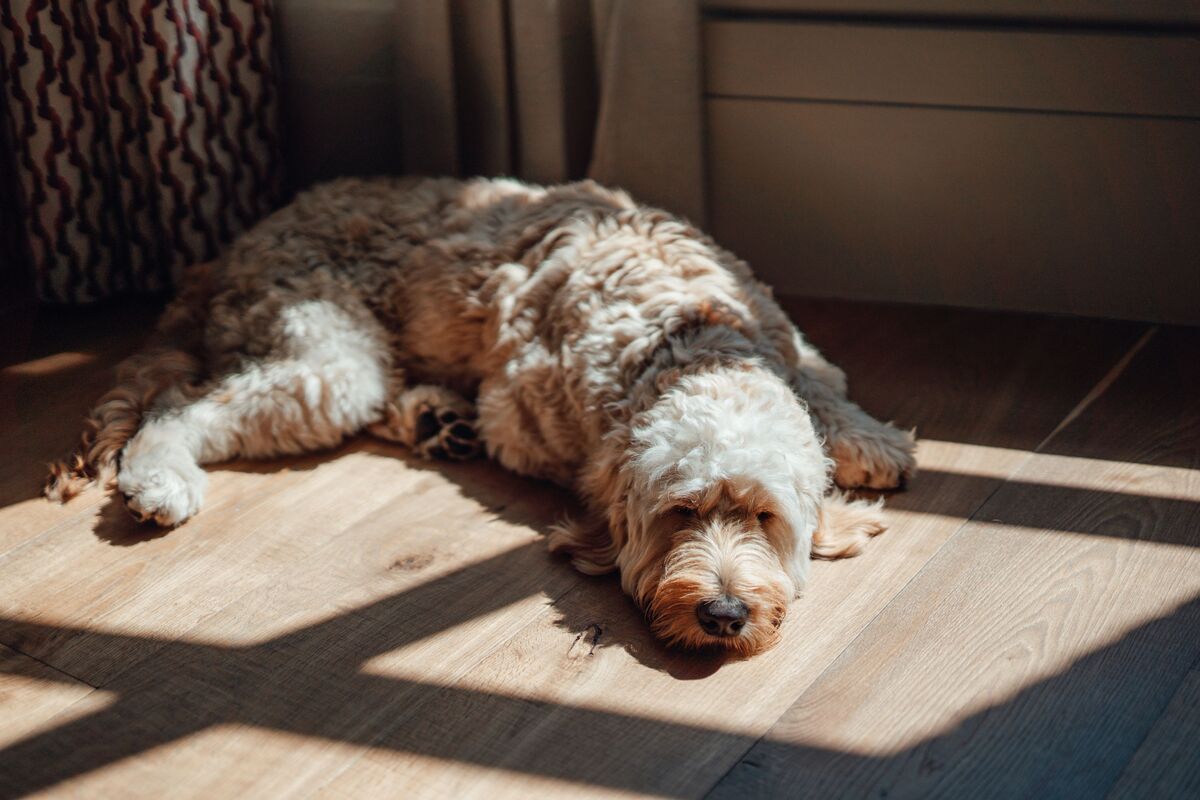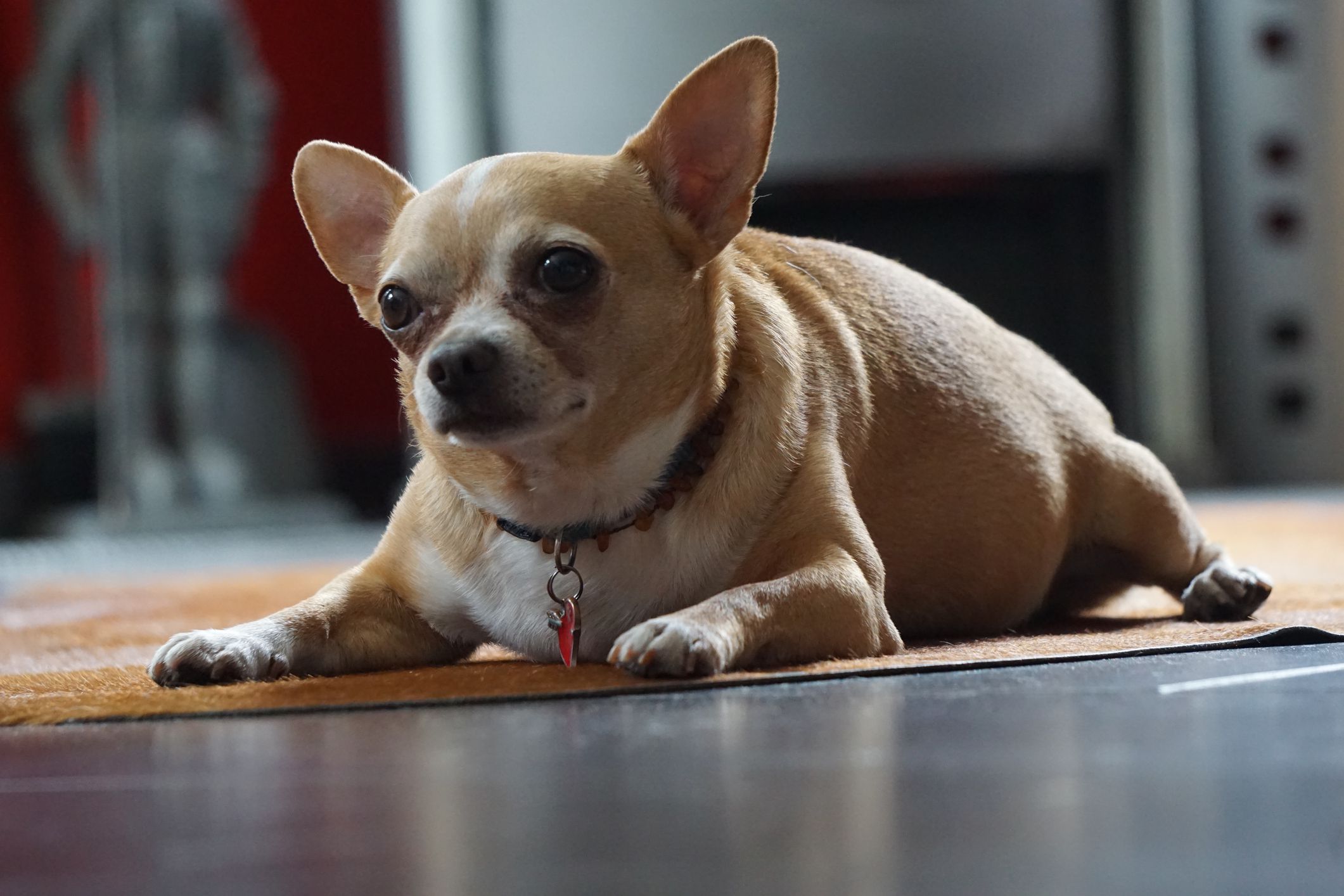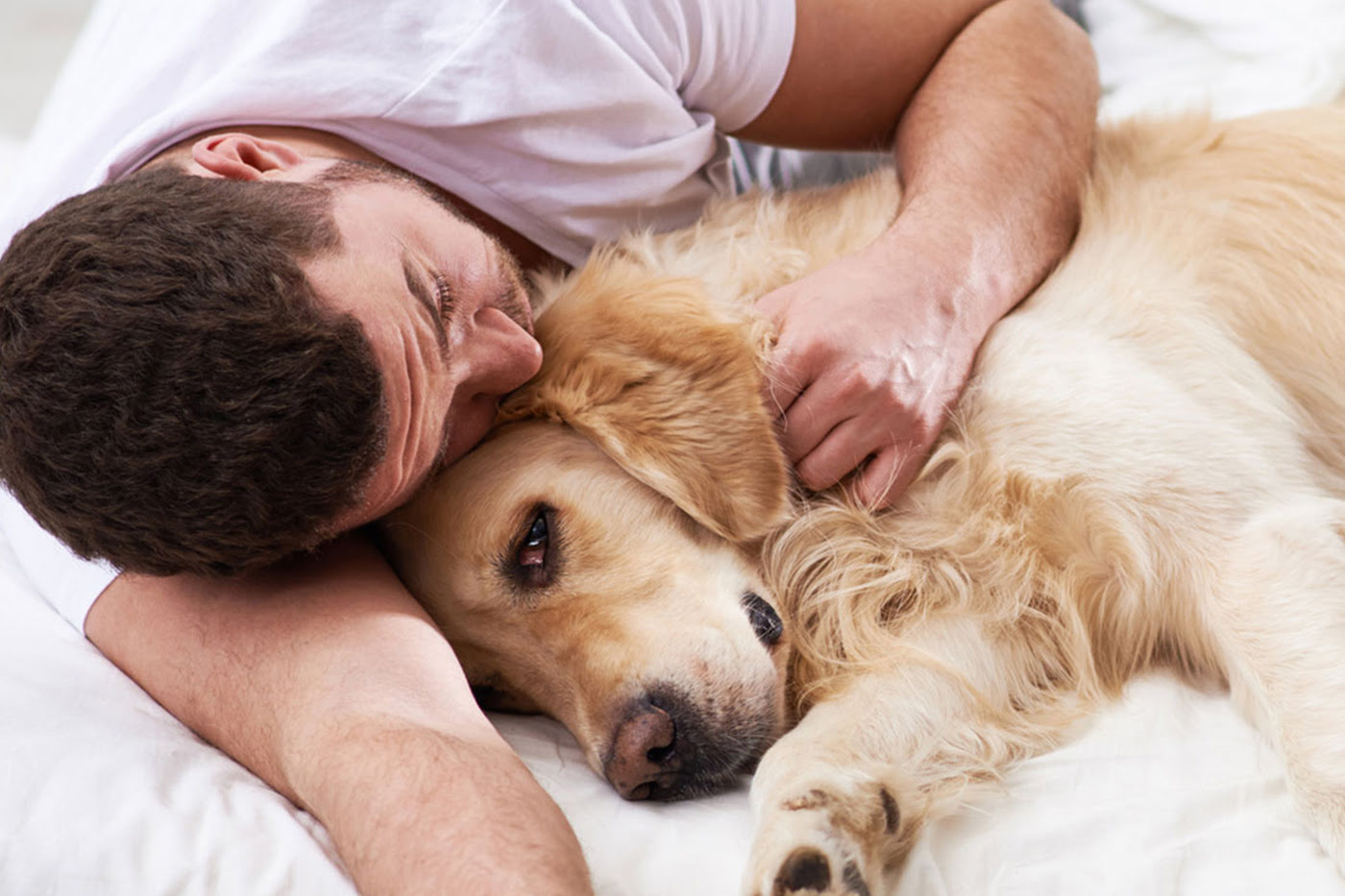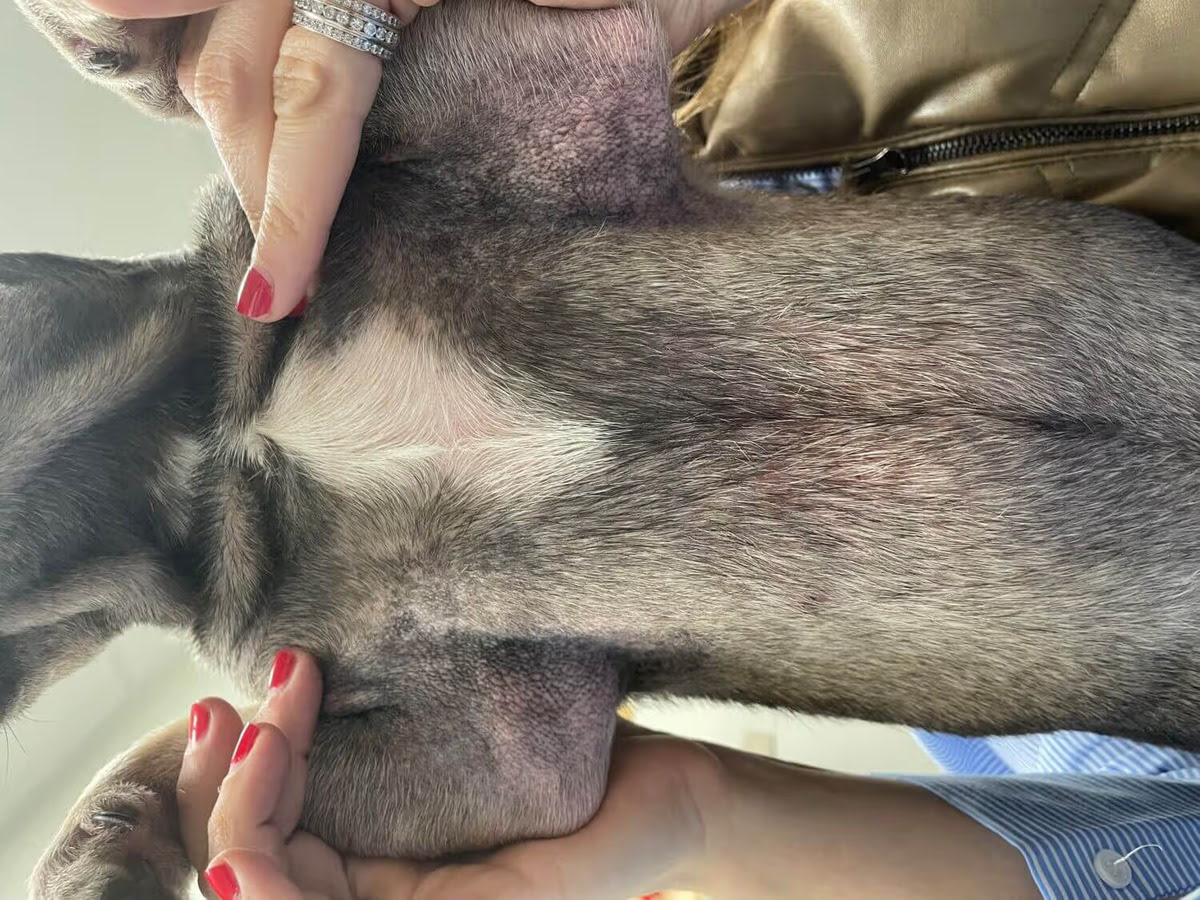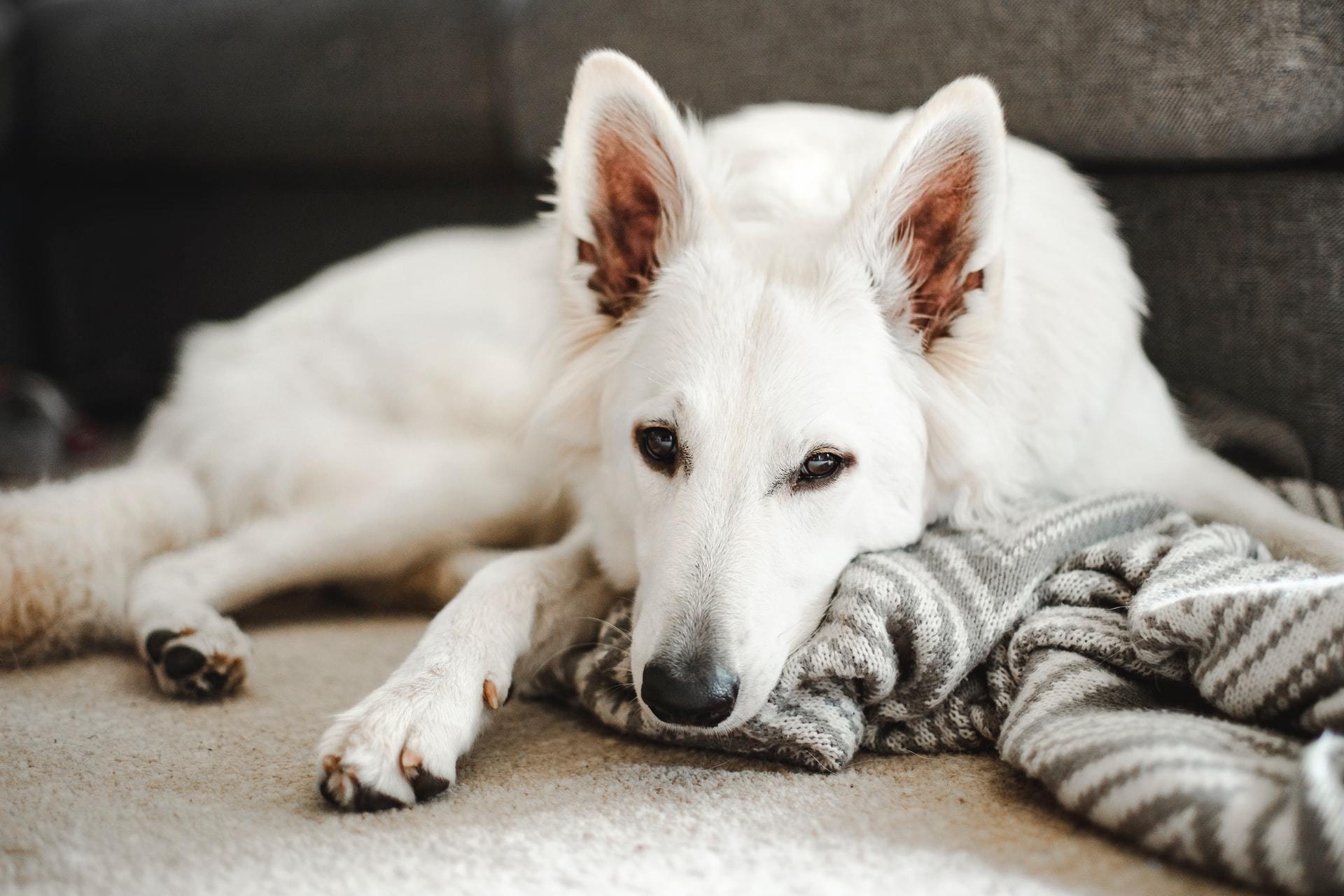Home>Health & Wellness>Common Health Issues>What To Do When Your Dog Has Fleas


Common Health Issues
What To Do When Your Dog Has Fleas
Modified: February 21, 2024
Learn effective ways to tackle common health issues like fleas in dogs. Discover practical tips and solutions to keep your furry friend healthy and happy.
(Many of the links in this article redirect to a specific reviewed product. Your purchase of these products through affiliate links helps to generate commission for Pawsomeoldies.com, at no extra cost. Learn more)
Table of Contents
Introduction
Dealing with fleas on your dog can be a frustrating and concerning experience. These tiny, blood-sucking pests not only cause discomfort to your furry friend but can also infest your home, posing a threat to both your pet and your family. However, with the right knowledge and proactive measures, you can effectively manage and prevent flea infestations.
Fleas are small, wingless insects that survive by feeding on the blood of animals and humans. They are notorious for their ability to reproduce rapidly, making them a persistent nuisance once they infest a host or living space. When fleas take up residence on your dog, they can cause intense itching, skin irritation, and even transmit diseases. Therefore, it's crucial to address a flea problem promptly and comprehensively.
In this comprehensive guide, we will explore the various aspects of dealing with fleas on your dog, from identifying the presence of fleas to implementing effective treatment and prevention strategies. By understanding the signs of a flea infestation, learning how to treat your dog and your home, and taking proactive measures to prevent future occurrences, you can ensure the well-being of your beloved pet and maintain a flea-free living environment.
Stay tuned as we delve into the essential steps for managing fleas on your dog and creating a comfortable, pest-free environment for your entire household.
Identifying Fleas on Your Dog
Identifying fleas on your dog is the crucial first step in addressing a potential flea infestation. These pesky parasites are adept at hiding within your pet's fur, making them challenging to spot with a cursory glance. However, by paying close attention to your dog's behavior and conducting a thorough examination, you can detect the presence of fleas and take prompt action to alleviate the issue.
Signs of Fleas on Your Dog
-
Excessive Scratching and Biting: One of the most common signs of fleas on dogs is persistent scratching, biting, or licking of the skin. If you notice your dog displaying heightened levels of itchiness, especially around the tail, abdomen, or hind legs, it could indicate the presence of fleas.
-
Visible Fleas or Flea Dirt: Fleas are small, agile insects that may be challenging to spot directly. However, you may notice tiny, dark specks resembling dirt or pepper on your dog's skin and fur. This "flea dirt" is actually flea feces, which consists of digested blood and is a telltale sign of a flea infestation.
-
Redness and Irritation: Flea bites can cause skin irritation and redness, leading to discomfort for your dog. Check for signs of inflamed or reddened skin, as well as the presence of small bumps or scabs, which may indicate flea activity.
-
Hair Loss: In severe cases of flea infestation, dogs may experience hair loss, particularly in areas where fleas congregate and feed. Keep an eye out for patches of thinning fur or bald spots, as these could be indicative of a significant flea problem.
Conducting a Flea Check
To effectively identify fleas on your dog, follow these steps:
-
Use a Fine-Toothed Comb: Gently comb through your dog's fur, paying close attention to the neck, back, and tail regions. A fine-toothed flea comb can help trap and remove adult fleas and flea dirt, aiding in the identification process.
-
Inspect the Fur and Skin: Part your dog's fur and examine the skin for signs of flea activity. Look for live fleas, flea dirt, or any signs of irritation or inflammation.
-
Check the Surroundings: While focusing on your dog, also inspect their bedding, favorite resting areas, and other spots where fleas may hide or lay eggs. This comprehensive approach can help you gauge the extent of the infestation.
By diligently observing your dog's behavior and conducting thorough inspections, you can effectively identify the presence of fleas and take the necessary steps to address the issue promptly. Once you have confirmed a flea infestation, the next crucial phase involves implementing appropriate treatment measures to alleviate your dog's discomfort and eradicate the fleas from your home environment.
Treating Your Dog for Fleas
Once you have identified fleas on your dog, prompt and effective treatment is essential to alleviate your pet's discomfort and eradicate the infestation. There are several methods for treating your dog for fleas, each aimed at targeting adult fleas, preventing their reproduction, and soothing irritated skin. By employing a combination of these approaches, you can effectively combat fleas and restore your dog's well-being.
1. Topical Flea Treatments
Topical flea treatments, such as spot-on solutions and flea control drops, are applied directly to your dog's skin, typically between the shoulder blades. These treatments contain active ingredients that target adult fleas, disrupting their life cycle and preventing further infestation. It's important to follow the manufacturer's instructions and dosage recommendations when using topical flea products to ensure their safety and effectiveness.
2. Flea Collars
Flea collars are another popular method for treating and preventing flea infestations in dogs. These collars release active ingredients that repel and kill fleas, providing long-lasting protection. When using flea collars, ensure they fit snugly but comfortably around your dog's neck, and trim any excess length to prevent chewing. Additionally, monitor your dog for any signs of skin irritation or adverse reactions to the collar.
3. Oral Flea Medications
Oral flea medications, available in chewable tablet or pill form, offer a convenient and effective way to combat fleas. These medications work systemically, meaning they circulate in your dog's bloodstream and target fleas when they feed on your pet's blood. Oral flea treatments are often prized for their ease of administration and ability to provide comprehensive protection against fleas.
4. Bathing and Grooming
Regular bathing and grooming play a crucial role in managing flea infestations. Use a high-quality flea shampoo specifically formulated for dogs to cleanse your pet's coat and eliminate adult fleas and flea dirt. Additionally, grooming your dog with a fine-toothed flea comb can help remove remaining fleas and their eggs, reducing the population and preventing reinfestation.
Read more: What To Do If Your Dog Has Ticks
5. Environmental Control
In addition to directly treating your dog, it's essential to address the flea infestation in your home environment. Wash your dog's bedding, vacuum carpets and upholstery, and use pet-safe flea sprays or foggers to eliminate fleas and their eggs from your living spaces. By combining dog-focused treatments with comprehensive environmental control, you can effectively break the flea life cycle and prevent recurring infestations.
By implementing these targeted treatment methods and maintaining a proactive approach to flea control, you can effectively alleviate your dog's discomfort and create a flea-free environment for your beloved pet. Regular monitoring and preventive measures will help safeguard your dog against future flea infestations, ensuring their continued well-being and happiness.
Treating Your Home for Fleas
Addressing a flea infestation involves not only treating your dog but also implementing comprehensive measures to eliminate fleas from your home environment. Fleas can lay eggs in carpets, upholstery, and other areas where your pet spends time, leading to a persistent cycle of infestation. Therefore, taking proactive steps to treat your home is crucial for eradicating fleas and preventing their return.
Vacuuming and Cleaning
Regular and thorough vacuuming is a fundamental step in combating fleas within your home. Focus on areas where your dog frequents, such as carpets, rugs, and furniture. Pay special attention to crevices, corners, and beneath furniture, as these are common hiding spots for flea eggs and larvae. After vacuuming, promptly dispose of the vacuum bag or clean the canister to prevent any captured fleas from reinfesting your home.
Washing Pet Bedding and Linens
Wash your dog's bedding, blankets, and any other washable items that may harbor fleas and their eggs. Use hot water and a pet-safe detergent to effectively eliminate fleas at all life stages. Additionally, consider washing your own bedding and any shared linens to prevent the spread of fleas within the household.
Flea Sprays and Foggers
Utilize pet-safe flea sprays or foggers to treat your home for fleas. These products are designed to kill adult fleas, larvae, and eggs, effectively breaking the flea life cycle. When using flea sprays, focus on areas where fleas are likely to hide, such as pet resting areas, baseboards, and beneath furniture. Follow the manufacturer's instructions carefully to ensure safe and effective application.
Outdoor Treatment
If your dog spends time outdoors, consider treating your yard and outdoor living spaces for fleas. Use pet-safe yard sprays or granules to target flea hotspots, such as shaded areas and outdoor resting spots. By addressing fleas in your outdoor environment, you can minimize the risk of reinfestation when your dog ventures outside.
Professional Pest Control
In severe or persistent flea infestations, seeking the assistance of professional pest control services may be necessary. Pest control experts can provide targeted treatments to eliminate fleas from your home, offering long-term relief and peace of mind.
By combining these home treatment strategies with dog-focused flea control measures, you can effectively break the flea life cycle and create a pest-free living environment for both your pet and your family. Consistency and thoroughness are key to successfully eradicating fleas from your home, ensuring a comfortable and healthy living space for all inhabitants.
Preventing Future Flea Infestations
Preventing future flea infestations is essential for maintaining a healthy and comfortable environment for your dog and your family. By implementing proactive measures and incorporating ongoing flea prevention into your pet care routine, you can significantly reduce the risk of recurring flea problems. Here are effective strategies to prevent future flea infestations:
Read more: Is It Ok To Use Adams Flea And Tick Cleansing Shampoo When Your Dog Has Sores From Fleas?
1. Regular Flea Prevention Products
Consistent use of veterinarian-recommended flea prevention products is crucial for safeguarding your dog against fleas. Topical treatments, oral medications, and flea collars provide long-lasting protection, effectively repelling and killing fleas before they can infest your pet. Follow the prescribed dosage and application schedule to ensure continuous efficacy.
2. Environmental Maintenance
Maintaining a clean and well-groomed environment is key to preventing flea infestations. Regular vacuuming, washing pet bedding, and cleaning areas where your dog spends time can help eliminate flea eggs and larvae, disrupting their life cycle. By minimizing potential flea habitats within your home, you can create an inhospitable environment for these pests.
3. Outdoor Pest Control
If your dog spends time outdoors, consider implementing outdoor pest control measures to prevent fleas from infiltrating your living spaces. Use pet-safe yard sprays or granules to target flea hotspots in your yard, creating a barrier against outdoor flea infestations. Additionally, maintaining a well-manicured outdoor environment can deter fleas and other pests from taking up residence.
4. Regular Grooming and Inspection
Incorporate regular grooming sessions into your pet care routine, including thorough inspections for signs of fleas. Use a fine-toothed flea comb to check for adult fleas and flea dirt, and monitor your dog's skin for any redness or irritation. Early detection of fleas allows for prompt intervention, preventing infestations from taking hold.
Read more: What To Do If A Dog Has Fleas In Its Ear
5. Consistent Monitoring
Stay vigilant and observant when it comes to your dog's behavior and overall well-being. Keep an eye out for any signs of itching, scratching, or discomfort, as these could indicate the presence of fleas. By consistently monitoring your dog's health and behavior, you can address potential flea issues before they escalate into full-blown infestations.
6. Professional Guidance
Consult with your veterinarian for personalized recommendations on flea prevention and control. Veterinarians can provide valuable insights into the most effective flea prevention products and strategies tailored to your dog's specific needs and lifestyle. Regular check-ups and consultations can help ensure that your flea prevention efforts remain optimized.
By integrating these preventive measures into your pet care regimen, you can effectively minimize the risk of future flea infestations, providing your dog with a comfortable and flea-free living environment. Consistency, diligence, and a proactive approach to flea prevention are key to safeguarding your pet's well-being and maintaining a harmonious household.
Conclusion
In conclusion, addressing and preventing flea infestations in dogs requires a multifaceted approach that encompasses vigilant monitoring, targeted treatment, and ongoing preventive measures. By recognizing the signs of fleas on your dog, such as excessive scratching, visible flea dirt, and skin irritation, you can promptly take action to alleviate your pet's discomfort. Conducting thorough flea checks and implementing effective treatment methods, including topical solutions, flea collars, oral medications, and regular grooming, is essential for eradicating fleas and restoring your dog's well-being.
Furthermore, treating your home for fleas is a critical component of comprehensive flea control. Through regular vacuuming, washing pet bedding, and utilizing pet-safe flea sprays, you can effectively eliminate fleas from your living spaces, breaking the flea life cycle and preventing reinfestation. Additionally, outdoor pest control and professional assistance can offer further support in creating a flea-free environment for your dog and your family.
Looking ahead, proactive flea prevention remains paramount in safeguarding your dog against future infestations. Consistent use of veterinarian-recommended flea prevention products, environmental maintenance, and regular grooming and inspection are integral to minimizing the risk of flea problems. By staying vigilant and seeking professional guidance, you can ensure that your flea prevention efforts remain optimized and tailored to your dog's specific needs.
Ultimately, by integrating these comprehensive strategies into your pet care routine, you can create a comfortable, pest-free environment for your beloved dog, promoting their overall well-being and happiness. Through a combination of attentive care, targeted treatment, and ongoing prevention, you can effectively manage flea infestations and provide your pet with a healthy and harmonious living environment.
